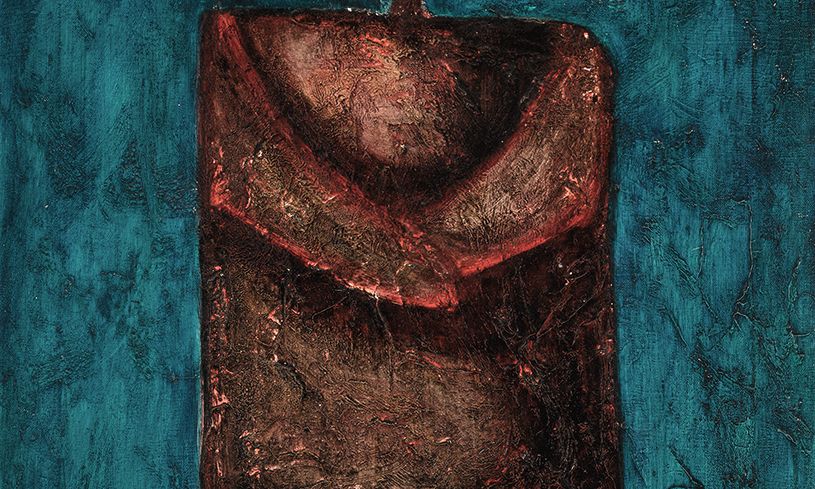Bahman Mohasses, Untitled (Fifi) (1964)
Bahman Mohasses, dubbed the “Persian Picasso”, painted this work during a prolific period of his career. It centres on a faceless, fictitious female character, Fifi, who features in a number of his works across the decades, including another in the same Sotheby’s sale (also estimated at £150,000-£200,000). This character also inspired the title of a documentary on Mohasses, Fifi Howls from Happiness, released in 2013, three years after he died. The film documents Mohasses in his final years, living alone in a hotel room in Rome, and even captures the moment he dies from lung cancer. This present lot is one of 13 in this sale that are owned by the Iranian collectors Shireen and Reza Khazeni, alongside works by Mansour Ghandriz and Sohrab Sepehri.
Hidden in private ownership and believed lost for decades, this late portrait by Gustav Klimt is to be auctioned after the current owner reached a settlement with the heirs of the family that commissioned the painting. While the picture is documented in Klimt catalogue raisonées, it was only known to art historians as a black-and-white photograph. Very little is recorded about the provenance of the portrait before 1960. The
name of its commissioner was documented only as “Lieser”—a family of important Jewish industrialists in the Austro-Hungarian Empire. It was long believed that the painting was commissioned by Adolf Lieser and portrayed his daughter.
However, there are some indications it could have been commissioned by Henriette Lieser-Landau, the ex-wife of Justus Lieser—Adolf’s brother—according to Ernst Ploil, one of the managing directors of Im Kinsky auction house in Vienna. Henriette, who was also a friend of the composer and author Alma Mahler, had two daughters who could have been the subject of the painting. She was deported in 1942 and murdered in 1943 by the Nazis, Ploil told a press conference in Vienna. “What is for sure is that the painting was still in Klimt’s studio at the time of his death” in 1918, Ploil said, and it is not quite finished.
After Klimt died, this painting is presumed to have been delivered by the executors of his will to whomever commissioned it. According to Ploil, in negotiations with the Lieser heirs, the auction house “assumed a worst-case scenario”—that the painting was unlawfully expropriated during the Nazi era—but there was no evidence of this. The heirs will receive a share of the proceeds from the auction, he said.
© Swann Galleries Inc.
“A handball player throws himself with ferocious purpose into a game he is playing alone, against a low, cracked wall suggesting a world that is never as solid as it may seem,” reads a 1988 New York Times write-up of this mid-career oil painting by the 20th-century US painter Hughie Lee-Smith. The work was exhibited that year at Kenkeleba Gallery in New York, alongside works by Eldzier Cortor and Archibald John Motley Jr. It was previously in Lee-Smith’s personal collection before it was bought by the current owners. The artist’s record price at auction was achieved in 2022 by Swann in New York for another painting of a stark urban scene. Aftermath (1960) made $365,000 (with fees) against an estimate of $120,000 to $180,000. Judging from this present lot’s own guide price, it seems the house is hoping for another major score.
Courtesy of Christie’s
This equine scene set in Utah is a prime example of the works made by Thomas Hart Benton depicting the American Great Plains and Rocky Mountains. Since 1965 it has been in the collection of Lois and Philip Macht, a Boston-based couple who also acquired African masks, pre-Columbian figures and works by Fairfield Porter, Gabriele Münter and Yves Tanguy. Works from their collection will also be offered at Christie’s sales in late 2024 and early 2025. The present lot leads Christie’s Modern American Art sale. This will be the fourth year that the auction house has subdivided its American Art sales into 19th Century (selling in January) and Modern (selling in April). “This format reflects the market, which used to be dominated by collectors who bought across centuries, and is now increasingly divided between more traditional collectors and Modernist collectors,” a Christie’s spokesperson says.

